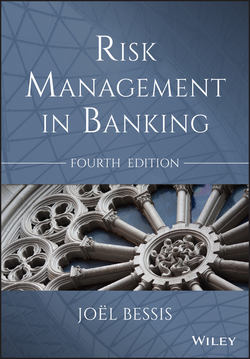Читать книгу Risk Management in Banking - Bessis Joël - Страница 17
2
BANKING REGULATIONS OVERVIEW
2.4 The Responses of Regulators to the Financial Crisis
ОглавлениеFollowing the 2008 financial crisis, the Basel regulators introduced a number of measures to make banks more resilient. A number of significant updates to the regulatory framework have been introduced, reshaping the regulations, after the Basel 2 Accord, into new Basel (2.5 or 3) rules. The main publications include: the global review of the regulatory framework was first published in December 2010, revised in June 2011, “Basel III: A Global Regulatory Framework for More Resilient Banks and Banking Systems” [24], a “Revision to the Basel 2 Market Risk Framework” is dated February 2011 [25]; the Consultative Document “Fundamental Review of the Trading Book: A Revised Market Risk Framework” [27] was submitted to the industry in October 2013 and covers the regulations for both credit risk and market risk, as of this date.
Figure 2.1 maps the approaches under Basel 2 and the sequential sets of new regulations. The shaded boxes refer to the Basel extensions beyond Basel 2.
Figure 2.1 Overview of Basel regulations
The Basel 2 blocks refer to the credit risk treatment for credit capital charges, with the risk-weighted assets according to banks' internal ratings. The current wave of regulations aims at reinforcing both the quality and the quantity of capital. The fraction of equity capital in total capital is reinforced and the capital ratio increases. The subsequent publications imposed new capital requirements, with a series of additions to the Basel 2 capital. The Basel 2 rules are expanded in Chapter 26 dedicated to credit regulations.
The market risk approaches include the VaR-based capital plus the standardized approach of market risk for firms who do not comply with requirements of internal models. A stressed VaR was introduced as an additional capital charge in 2011. An alternate VaR measure is currently proposed for market risk. All market risk approaches are presented in Chapter 17 in the market risk section.
The treatment of counterparty credit risk has been enhanced with the credit-value adjustment (CVA) that measures the impact of deteriorating credit standing on the value of derivative instruments. The CVA adjustment is introduced in Chapter 22 on counterparty credit risk.
The blocks referring to liquidity and funding ratios cover three ratios gradually introduced by Basel 3. The Liquidity Coverage Ratio (LCR) imposes a minimum level of liquid assets for facing market disruptions to banks' funding. The Net Stable Funding Ratio imposes a minimum level of long-term funding, depending on banks' assets. The leverage ratio caps the size of the balance sheet and of certain off-balance sheet commitments as a function of the capital base. The three ratios are presented in Chapter 3 on balance sheet compliance, where the calculations and the consequences for the balance sheet of banks are detailed through a simplified example.
